Caprock Design + Build Blogs
Buildwise Journal
Caprock Design + Build Blogs
Buildwise Journal
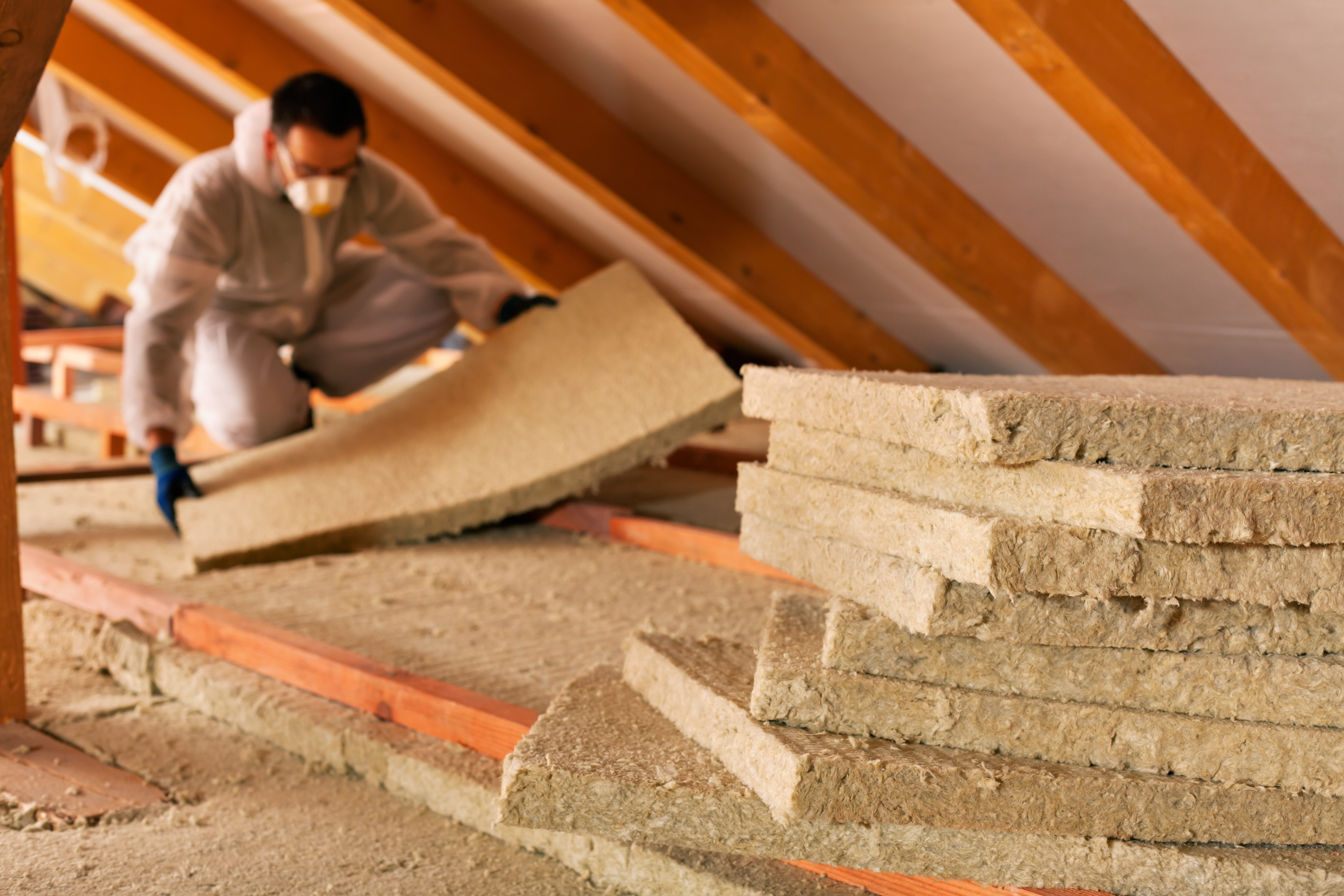
Understanding Insulation and Energy Efficiency in High-Performance Homes
Welcome back to the Buildwise Journal, where we're continuing our deep dive into the world of "Building Science Basics." Last week, we explored the fundamentals of high-performance homes and why the 6 principles of high-performance homes matter.
This week, we're focusing on a crucial aspect of energy efficiency—insulation. Understanding insulation is key to creating homes that are not only comfortable but also energy-efficient and sustainable.
In this blog, you’ll learn the role insulation plays in energy efficiency, the pros and cons of each type of insulation, and which installation technique ensures your home stays comfortable year after year.

The Role of Insulation in High-Performance Homes
Insulation is like the unsung hero of your home, quietly working behind the scenes to keep you comfortable and your energy bills in check. In high-performance homes, it plays a pivotal role in achieving superior energy efficiency. Here's why it matters:
1. Temperature Control
Insulation helps maintain consistent indoor temperatures by minimizing heat transfer through your home's walls, roof, and floors. In the scorching Texas Panhandle summers and chilly winters, this is a game-changer for comfort.
2. Energy Savings
By reducing the need for heating and cooling, proper insulation leads to significant energy savings. Over time, this translates into lower utility bills and a reduced carbon footprint.
3. Soundproofing
Insulation also provides excellent soundproofing, ensuring your home is a quiet retreat from the outside world. This is especially valuable for those who live in busy neighborhoods.
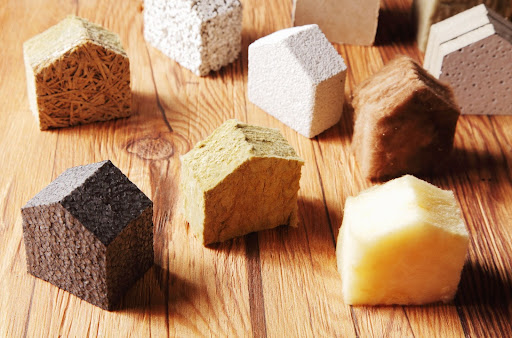
Types of Insulation for High-Performance Homes
High-performance homes demand top-notch insulation materials and techniques. Here are some common types of insulation used:
1. Spray Foam Insulation
This modern insulation option provides an airtight seal and excellent thermal resistance. It's particularly effective in sealing gaps and crevices, enhancing energy efficiency. Spray foam is made of polyurethane foam, which expands to form an airtight, waterproof seal.
Pros:
Seals off small crevices that other types of insulation cannot reach
Doesn’t break down easily, thus giving it a much longer lifespan
It’s synthetic and hardens as it cures, so it does not attract insects
Can reduce energy costs by as much as 50%
Increases resale value of the home in the long run
Cons:
More expensive than other options like fiberglass
Requires an installer with adequate experience to apply it correctly and cut down on the mess
The installation process creates some off-gassing and requires ventilation as it sets
Not fire-resistant, but the material is treated with flame retardants to lower the possibility of fires
2. Fiberglass Insulation
Used in 85% of American homes and businesses, fiberglass insulation is a tried-and-true choice known for its affordability and effectiveness.
Fiberglass insulation works by trapping air bubbles between layers of extremely fine glass fibers, creating an insulating effect that slows the heat exchange between surfaces. It's available in batts or loose-fill forms and can be used in walls, attics, and crawl spaces.
Pros:
Very easy to apply, even by new contractors or DIY homeowners
Resists moisture, making it ideal for high-humidity areas
The material is noncombustible and fire-resistant
For many brands, almost half of the material is recycled, and the other portion of the insulation is manufactured from renewable materials
Cons:
The insulation material can be inhaled and even embedded in the pores of your skin, so wearing safety equipment is a must
Less effective in improving energy efficiency than spray foam, especially in extremely cold conditions
Not an option for an existing home or business, as it is often only used as a primary method of insulation
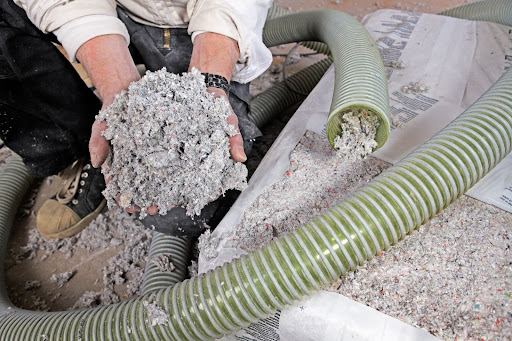
3. Cellulose Insulation
Made from recycled paper products, cellulose insulation is an eco-friendly choice. It provides good thermal performance and is often used in attics and wall cavities.
Typically, builders blow cellulose insulation into the walls and attic of the home. The material is designed to be blown through holes drilled into plaster or drywall using blower nozzles and blown into attics to fill uninsulated joist cavities.
Pros:
Settles and conforms to any shape or obstruction in your walls or attics
Relatively inexpensive compared to other kinds of insulation, yet it still has a significantly high R-value (measurement of insulating power) for its price
The material is safe to be around and naturally degrades, making it a more healthy and environmentally friendly option
Cons:
As the cellulose settles or compacts, it can leave gaps at the top of spaces, reducing its effectiveness
Soaks up any and all moisture and takes a long time to dry back out, which can lead to mold and mildew problems
4. Rigid Foam Insulation
Made from quality petroleum products, rigid foam boards are ideal for insulating exterior walls and roofs. They offer high R-values, which indicate their thermal resistance.
Rigid foam insulation is one of the only reversible insulation options available. The boards come in several varieties, including styrofoam, extruded polystyrene, and polyisocyanurate.
Pros:
Easily cut to fit around any irregular-shaped openings without leaving any gaps or holes
Helps prevent mold and mildew problems by creating a vapor barrier that stops moisture from entering your home
Absorbs sound waves, reducing the overall noise level in your home
Cons:
One of the more expensive insulation options on the market
Petroleum materials are not fire-resistant and can release toxic fumes when they burn
Need to be carefully measured and cut to fit, which can be a time-consuming and frustrating process
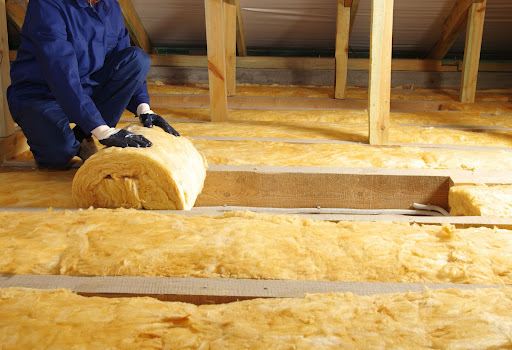
5. Mineral Wool Insulation
Mineral wool insulation, made from volcanic rock or slag, is known for its fire resistance and soundproofing properties. It's a versatile choice for both thermal and acoustic insulation needs.
Mineral wool is often considered one of the most superior insulation materials as it has a 22-37% higher R-value than products like fiberglass. Its stiffer batts don’t tend to flop over easily. Mineral wool batts also don’t require staples or wire to keep them in place.
Pros:
Contains 70% recycled material
High-density material has significant sound-deafening properties
Water repellant, so it won’t encourage the growth of mold and mildew
Very fire-resistant and can even act as a fire stop
Cons:
More expensive, typically costing 25-50% more than fiberglass
Limited range of sizes available in stores
Heavy, dense materials can make installation tricky
Insulation Installation and Proper Techniques
Proper installation of insulation is crucial for achieving optimal results. Ensure that insulation is correctly fitted with no gaps, voids, or compression.
Whether you’re installing your insulation yourself or trusting a contractor/builder to do it for you, these are some critical mistakes to avoid making during the process:
Forgetting to air seal: Air seeping in between unconditioned and conditioned spaces can undo all the hard work that goes into installing insulation.
Blocking airflow: Don’t block soffit vents or wall vents, particularly in attic spaces. This airflow prevents humidity issues and lengthens the life of the roof.
Stopping short: An insulation job that leaves gaps and holes is better than nothing, but it won’t come close to the energy efficiency increase you can see from a job done right the first time.
Pay special attention to sealing around doors, windows, and electrical outlets to prevent air leaks. Consider the insulation's R-value to determine its effectiveness in different areas of your home.

Insulation Helps Increase Your Home’s Value, Comfort, and Energy Efficiency
Understanding insulation is essential for anyone interested in high-performance homes. It's a cornerstone of energy efficiency and indoor comfort. As the Texas Panhandle's leading Certified Passive House Builder, the Caprock Design + Build team is committed to using the best insulation practices, including mineral wool, to create homes that excel in every aspect of sustainability and performance.
In our next blog post, we'll explore the importance of proper ventilation systems in high-performance homes. Stay tuned for more insights into the world of building science and craftsmanship. Thank you for joining us on this journey toward excellence in home building!
And if you’re planning to build a new home or remodel an existing space to make it just right, we’re here to help. Book a meeting today, and let’s work together to combine your vision with our quality craftsmanship and building expertise.
